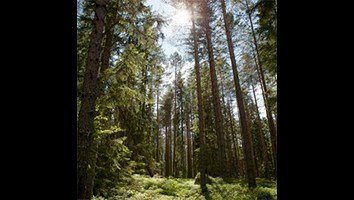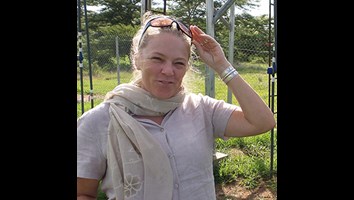Soil science
Soil science is the study of soil as a natural resource on the surface of the Earth including soil formation, classification and mapping; physical, chemical, biological, and fertility properties of soils; and these properties in relation to the use and management of soils.

The greenhouse gas inventory
Climate change affects ecosystems and society. To mitigate these effects, greenhouse gas emissions must be reduced. Greenhouse gas emissions and removals are monitored through the reporting to the UN
SLU Maps
Maps developed by SLU using data from our environmental monitoring and assessments. New maps are continuously added.
Forests
Within SLU's Forests programme there is a wealth of knowledge and experience about both Swedish and international forest-based environmental analysis.
About us
An intriguing mix of interdisciplinary research and researchers focused on providing scientifically founded decision, support and knowledge to the surrounding society
Sow a seed
One third of the world's tropical rainforests have been lost. Half of what remains is degraded. This project was launched in 1998 to show whether it is possible to rehabilitate severely degraded
Bachelors Forestry Program at the Department of Forest Ecology and Management
Join the movement to becoming a forest expert- your first step begins HERE! Our world-class team of experts can help you channel your passion into creating a better future for forests and people

Thesis presents unique study on flood mitigation in newly rewetted peatlands
Rewetting some of Sweden's drained peatlands has been touted as a measure to mitigate the effects of extreme weather. But how effective is this? In her doctoral thesis Shirin Karimi at SLU in Umeå
Dissertation Shirin Karim
Peatland hydrology in boreal Sweden: Modelling, long-term data analysis, and experimental rewetting charlotta.bergstrom@slu.se Shirin Karim defends her thesis "Peatland hydrology in boreal Sweden:
Diss Lukas Hallberg
Floodplain remediation in agricultural streams : improved process understanding for reduced eutrophication charlotta.eriksson@slu.se Lukas Hallberg defends his thesis "Floodplain remediation in
Video gallery
Videos about Forest History in Scandinavia For a first glimpse of our research ideas, have a look at our short films which we have produced together with Bosse and Titti Backström (Banum).

Jennie Barron
Jennie Barron is a professor of agricultural water management since 1 October 2017. Her inauguration lecture is about managing agricultural water in changing landscapes. Jennie Barron's research

Education
Education and Awareness A core part of the group is the promote awareness and understanding through teaching Forest History at the Undergraduate and Graduate Levels at SLU. For more information about
